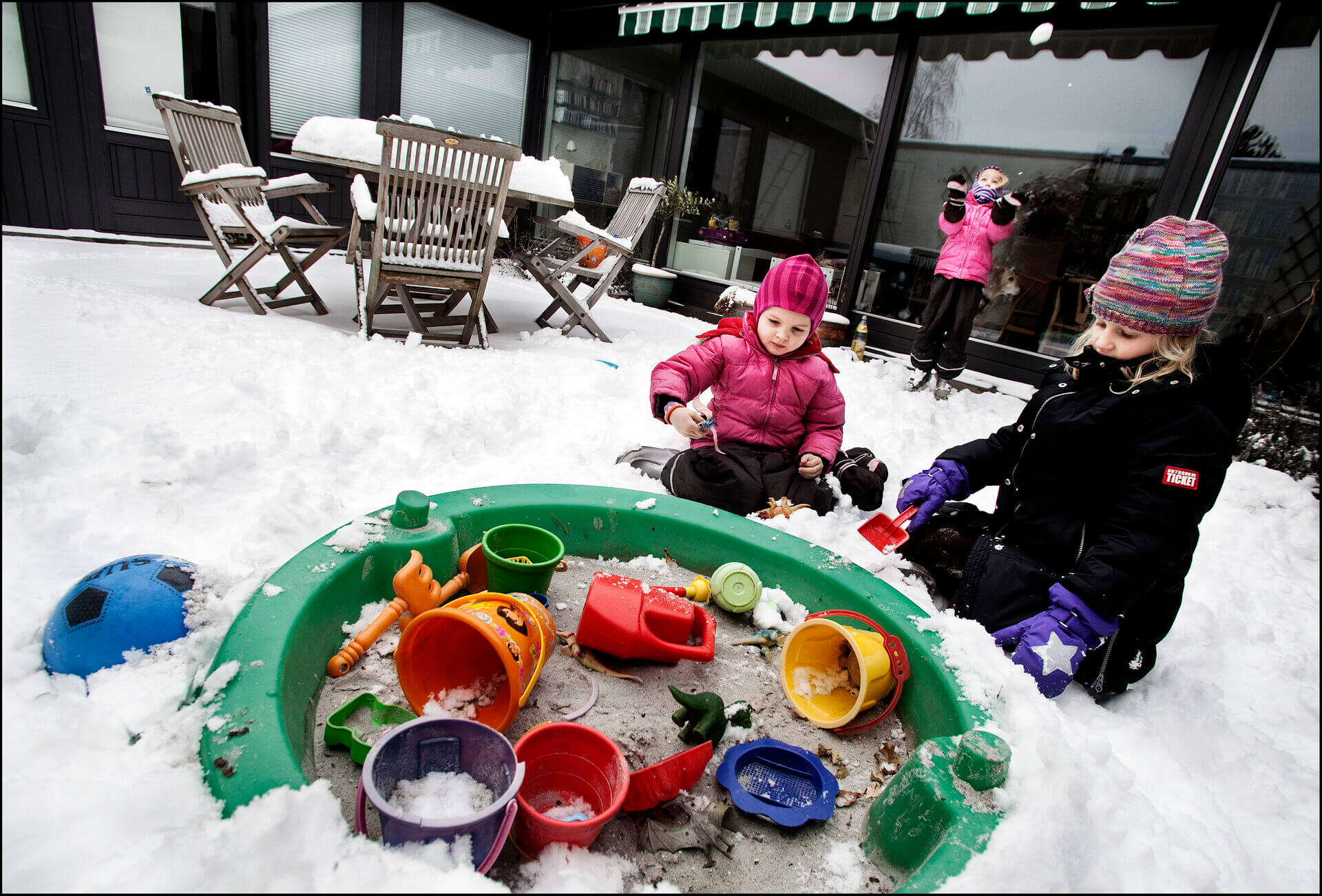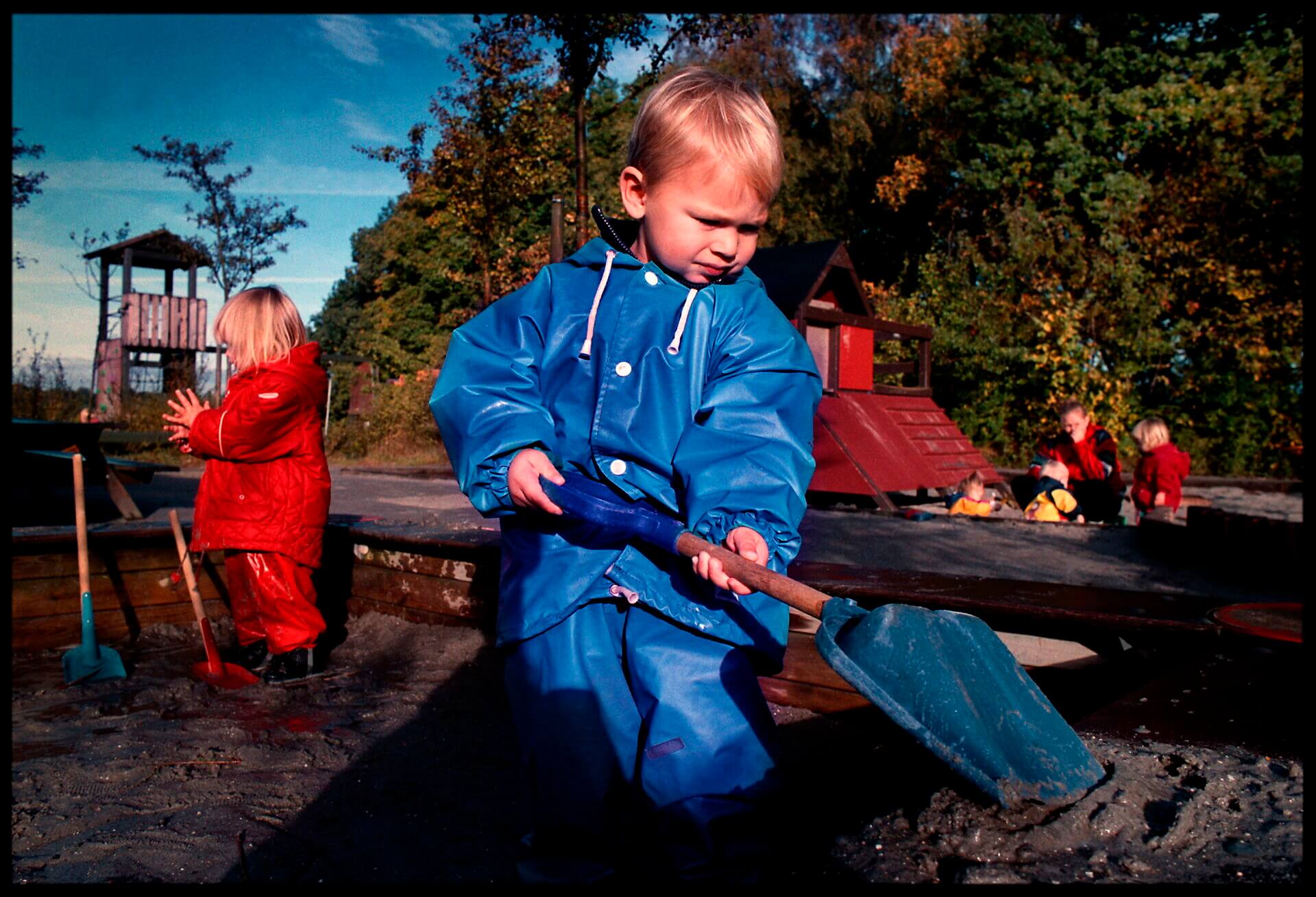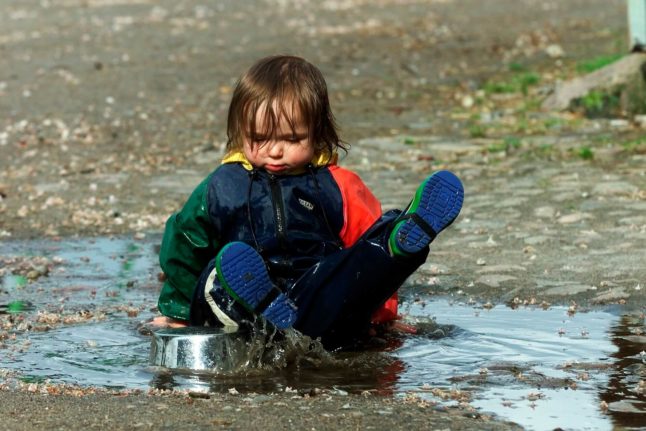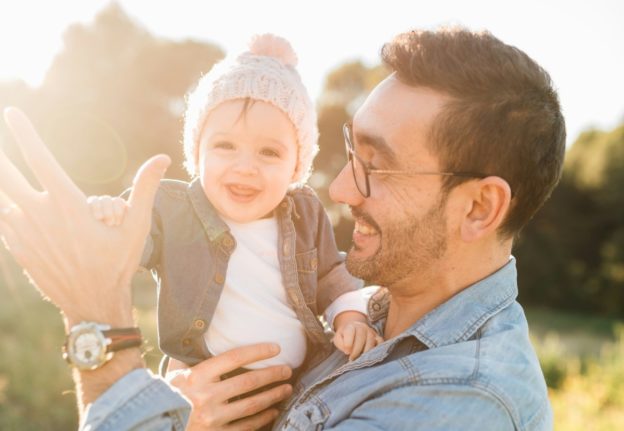Flyverdragt
From November to February there is only one thing young children in Denmark are wearing outside and that’s a flyverdragt (snow suit). These are all-in-one suits that other countries would perhaps only bring out for heavy snowfall. In Denmark, it is actually a requirement at nurseries and kindergartens that children wear these.
Some parents opt to have more than one flyverdragt per child to have a choice of thickness, but most brands are pretty hard-wearing.
Elefanthue
This is the balaclava hat and is a staple of children’s outdoor wear in Denmark. They come in varying thickness, from thin cotton to wear during spring to merino wool for the cold winter.
Nurseries and kindergartens don’t like children wearing scarves (halstørklæde), so the hat to go for is always an elefanthue, to keep neck, ears and head warm.

Handsker
Gloves: fabric ones for the autumn (fingervanter) and waterproof (vandtætte) or thick ski-type gloves for the winter. Stock up one these because they always go missing.
Regntøj
Literally translated, this means rain clothes. A waterproof set of jacket and trousers is needed all year round because it rains quite a lot in Denmark and rain is absolutely not a deterrent to playing outside.
These will be used more in autumn and spring than in winter, but it’s always useful to have a set to hand as they can be worn over thicker layers.
Termotøj are not part of the winter attire but useful to know about. These are the quilted jacket and trouser sets that most Danish children wear in the spring and autumn, along with a thin elefanthue.
Wheat, Mikk-Line and Celavi are popular brands.
READ MORE: Essential rain gear for a wet Danish winter (and spring, summer, autumn)

Vinterstøvler
Winter boots differ from standard wellington boots (gummistøvler) because they are fleece-lined, which makes quite a difference when children play outside for hours a day in winter. They might also have partially or fully leather uppers, which also makes them distinct from the plastic or rubber wellies. Both types are essential footwear.
‘All the gear and no idea’: how to keep track of it all?
Labelling is essential because it is practically guaranteed that your child will lose their outdoor clothes. This can be done with just a marker pen on the label.
Once children start kindergarten (børnehave) at the age of 2 years and 10 months, they are expected to dress and undress themselves when they play outside, which often means hats end up on the wrong peg or gloves in someone else’s pocket.
Be prepared to have spare gloves and hats at home as replacement while you wait for your child’s many lost items to turn up.
Children will go out to play more than once a day so many people choose to have a pair of wellies, warm socks and rain clothes that stay at nursery. This means there are always back-up options if their child’s other outdoor outfit gets soaked. There are drying rooms at nurseries and kindergartens for this reason.

Where to buy
Kitting out your child with all this can all be quite costly but luckily, second-hand children’s shops are big in Denmark. These include Mødrehjælpen (Mothers’ help), Redbarnet (Save the Children) and Børneloppen in Copenhagen, which is like a permanent flea market for children’s items.
Supermarkets like Bilka and Føtex also sell good quality outdoor clothes which can be a cheaper option. Parents also sell their children’s items on the popular app Reshopper, as well as DBA, Denmark’s answer to eBay.
Danish children’s brands can be pricey (Wheat and Reima being the most top-end) but if you’re buying your outdoor clothes in Denmark, at least they are likely to be suitable for the Danish weather.
READ MORE: Embrace hygge: How to survive Denmark’s long nights this winter



 Please whitelist us to continue reading.
Please whitelist us to continue reading.
Member comments